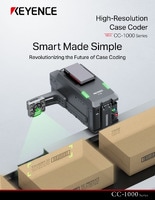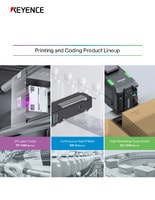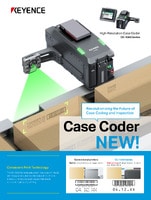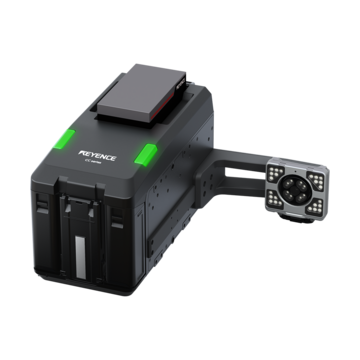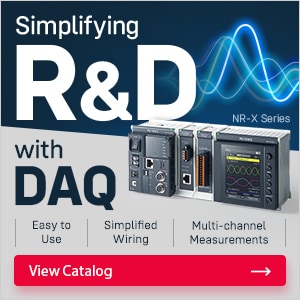Continuous Inkjet Printers / Case Coder
Materials and Products
Production Machines
Printing Applications
Smarter Case Coding with Label Printers
Key Takeaways
- High-resolution label printing delivers sharp case codes and barcodes for reliable traceability.
- Label coding reduces material waste by applying labels only where needed, cutting cost per case.
- Tool-free roll replacement minimizes downtime and simplifies changeovers across multiple SKUs.
- Centralized software controls print jobs remotely, ensuring consistency and reducing errors.
- Multi-material label compatibility expands coding flexibility for varied packaging formats.
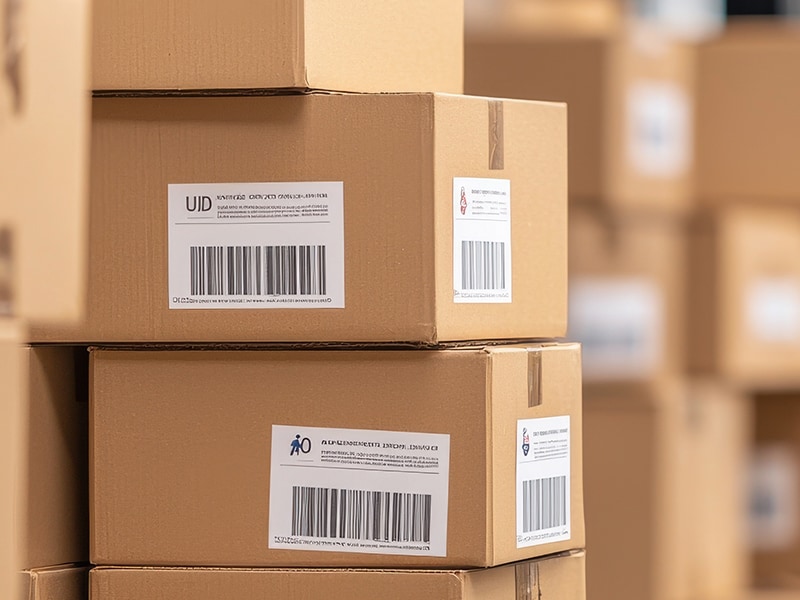
In high-volume production, applying accurate, durable labels to cases is more than a finishing step; it safeguards traceability, compliance labeling, and workflow. Label printing case coding integrates variable data printing directly into packaging lines, so each case leaves with clear, scannable information that supports handling, storage, and distribution. The right setup keeps production moving at pace while holding barcode clarity and label accuracy.
How Label Printers Support Case Coding
Label printers give label printing case coding lines a degree of flexibility that other methods can’t always match. On packaging lines, they handle everything from tall cartons to uneven surfaces without slowing the process. For high-speed, durable output, laser systems produce smudge-resistant marks that withstand rough conditions. When the job requires rich color or sharp imagery, inkjet units produce graphics ideal for branding and shelf-ready presentation.
We’re here to provide you with more details.
Reach out today!

Compliance Considerations for Barcode Labels
Compliance today covers far more than basic barcodes. Many operations now include QR codes, RFID tags, and eco-labels that highlight sustainability goals. GS1 and other standards bodies define the formats, placement, and scan requirements that apply across industries. To keep pace, printing and labeling need high resolution, precise positioning, and built-in verification, integrated into the workflow from the start.
Meeting GS1 and Industry Standards
GS1 uses standardized identification keys to track products worldwide. To remain compliant, barcodes have to meet strict dimensional and contrast requirements that directly affect barcode readability and case labeling accuracy. High-resolution printing at 360 DPI, paired with synchronized inspection, ensures codes remain within specification. Even small-format barcodes remain clear and scannable for uninterrupted supply chain visibility.
Best Practices for Reducing Label Waste
Material waste from traditional label production adds up quickly, especially with non-recyclable backing liners and ribbons, or when current solutions have inefficient printers that waste ink when purging/cleaning the print head. Smarter workflows reduce this by optimizing layouts, printing on demand, and matching label size to content, all steps that support label waste reduction without slowing production. Choosing recyclable or biodegradable materials further cuts environmental impact.
Reprints are another hidden source of waste. The CC-1000 Series helps prevent them with automated inspection and speed-compensated printing, keeping labels aligned and readable so fewer end up in the scrap bin.
Preventing Misalignment and Reprints
Misaligned or unreadable labels often result in scrap and added labor. Technologies that adjust for vibration, carton shift, and speed changes eliminate many of these issues. The CC-1000 Series’ long throw distance avoids collisions while delivering consistently accurate and clear prints, and its sensing system triggers at the right moment for every product.
When to Use Inkjet vs Label-Based Solutions
The choice between direct inkjet printing and label application in label printing case coding depends on the product being printed on and its environment. Label printing excels where high contrast, multi-surface application, or specialty stocks are required. Laser-printed labels are ideal for barcodes, waterproof materials, and heat resistance, while, on the other hand, inkjet labels offer superior image quality and color flexibility.
Direct inkjet coding is often faster and lower-cost per mark, with fewer consumables. It’s well-suited for internal logistics or when printing directly on cases is practical. KEYENCE offers a brand new high-resolution inkjet system for on-box printing and label-based integration for operations that benefit from printed labels.
Code with clarity and compliance, discover how the KEYENCE CC-1000 Series delivers smarter case coding with precision, speed, and sustainability.
Contact us to learn more today.
Contact us to learn more about how our advanced technology can help take your business to the next level.
Contact Us
FAQs
Can Label Printers Work Alongside Inkjet Coders?
Yes, label printers can work alongside inkjet coders. Many operations use label printers for certain packaging types and inkjet coders for others due to the lower operating costs at high speeds. Systems like the CC-1000 Series can integrate with both, offering flexibility in your coding setup.
How Do I Troubleshoot Barcode Readability Issues?
To troubleshoot barcode readability issues, check the resolution and contrast, ensure proper placement according to scanning standards. With the CC-1000 Series you can simply utilize the inline inspection readings from the integrated inspection system to pinpoint the issue and quickly correct the issue.
We’re here to provide you with more details.
Reach out today!

Related Downloads
Related Products
Applications
Materials and Products
- Glass Bottles
- Plastic Bottles/Containers
- Cans
- Wires, Cables, & Pipes
- Pouches
- Metal Parts
- Corrugate Boxes
- Packaging Film
- Kraft Packaging
- Folding Cartons
- Building Materials
- PCBs
- Cartons
- Pallets & Lumber
- Corrugate Trays
Production Machines
- Paper Bag Packaging
- Box Conveyor
- Automatic Palletizer
- Sealer/Taping Machine
- Bottle Filling Machine
- Flow Wrapper

